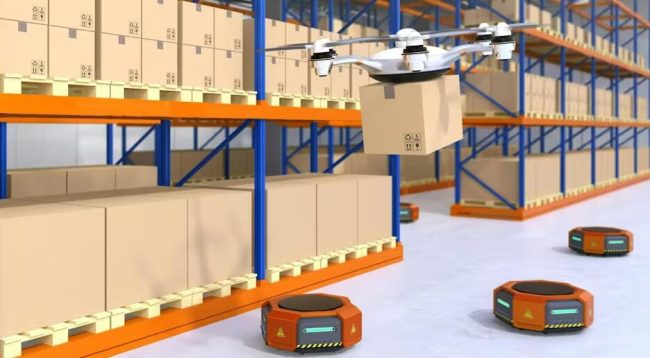
In today’s rapidly-changing business environment, companies must continuously adapt to new challenges and opportunities or risk getting left behind the rest of the pack. In fact, we’ve reached a point where automating the supply chain is much more than just a technological imperative; it’s also a crucial strategic choice for survival and development.
According to Inbound Logistics, many organizations are implementing or considering investments in automation solutions to drive workforce productivity and agility.
“Automation is key to corporate initiatives to drive growth,” the publication points out. “As more supply chains digitize, they can deliver a wealth of data. A lack of automation, however, can keep supply chain leaders from accessing real-time, enterprise-wide information that can help them identify operational inefficiencies.”
Innovative Solutions Wanted
Right now, many companies are looking for innovative solutions to help ensure future business continuity. Procurement offices have traditionally relied on manual processes, spreadsheets and email chains, neglecting digital transformation. “Leading procurement teams are now turning to intuitive, cloud-based automated procurement solutions to help team members evolve from passive roles to strategic ones,” says electronics component distributor WIN SOURCE.
“Buyers should also leverage this trend towards automation,” it continues, “to gain a deeper understanding of the benefits of automated supply chain management, such as increased efficiency, cost reduction and higher customer satisfaction levels.”
As with any major business initiative, achieving supply chain automation isn’t easy—and it’s a mission that can’t be rushed. Companies need to invest a significant amount of capital, manpower and time in technology research and development, system upgrades and personnel training. They must also overcome challenges like rapid technological updates and data security risks.
4 Clear Reasons to Automate
Challenges aside, there are clear benefits to automating procurement departments and supply chain operations, including:
- Enhanced operational efficiency. By introducing automation equipment and technology, manual operations can be greatly reduced, the rate of human errors can be lowered and production speed can be increased. “At the same time, the automation system can monitor the supply chain status in real-time, optimize resource allocation, and reduce inventory backlogs and waste,” WIN SOURCE says.
- Lower costs. Automation can reduce dependence on a large labor force, thereby lowering labor costs. Additionally, by optimizing inventory management and reducing transportation losses, companies can further reduce operating costs.
- Improved service quality. Supply chain automation can enable rapid responses to customer demands, increasing order processing speed and delivery accuracy. “This not only enhances customer satisfaction but also helps companies establish a good brand image,” WIN SOURCE points out.
- Better risk management. Automated systems can collect and analyze data in real-time, helping companies predict and respond to potential market risks. They can also improve the transparency and traceability of the supply chain, and help companies respond promptly to emergencies.
Keeping Pace and Seizing Opportunities
Supply chain automation not only helps boost productivity; it’s also an important step for businesses that want to keep pace and seize market opportunities. “Competitors have achieved precise control over production processes through automation, significantly improving product quality and production efficiency, thereby gaining a favorable position in the market,” says WIN SOURCE.
Moreover, changes in the general environment also require companies to consider automation solutions. “Globally, shifts in population structures and consumer habits are driving the transformation of production methods,” the company adds. “Rising labor costs and the growing demand for personalized products mean that traditional production models can no longer meet market needs.”
Companies that don’t actively embrace automation risk being eliminated by the market. Hence, considering automation solutions isn’t just about enhancing a company’s competitiveness—it should also be a key strategy for achieving sustained growth and long-term development.
©2024 Win Source Electronics. All rights reserved. This content is protected by copyright and may not be reproduced, distributed, transmitted, cached or otherwise used, except with the prior written permission of Win Source Electronics.

COMMENTS